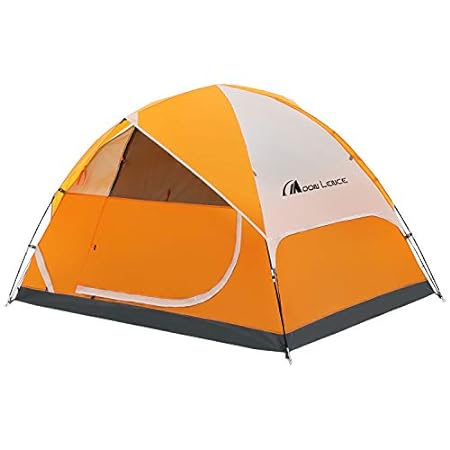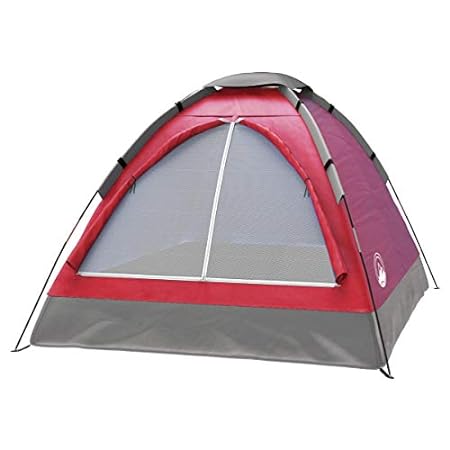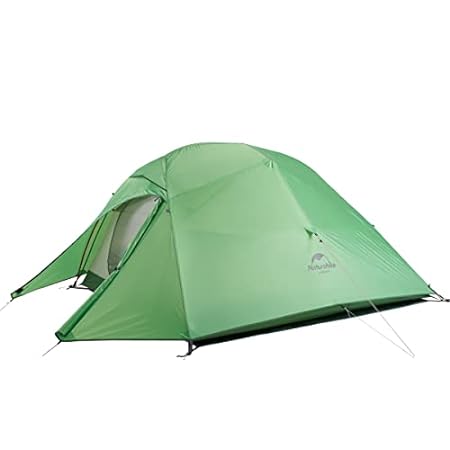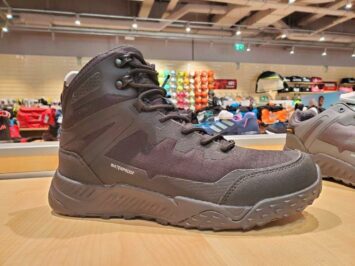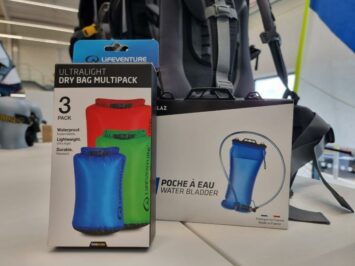Everybody wants to go easy on their pockets when it comes to exploring new places. It might seem a daunting task, but when you have the best backpacking tent under 200 dollars, you will have an affordable way to spend your camping nights protected. Discover the best budget backpacking tents here, and give yourself the best camping experience.
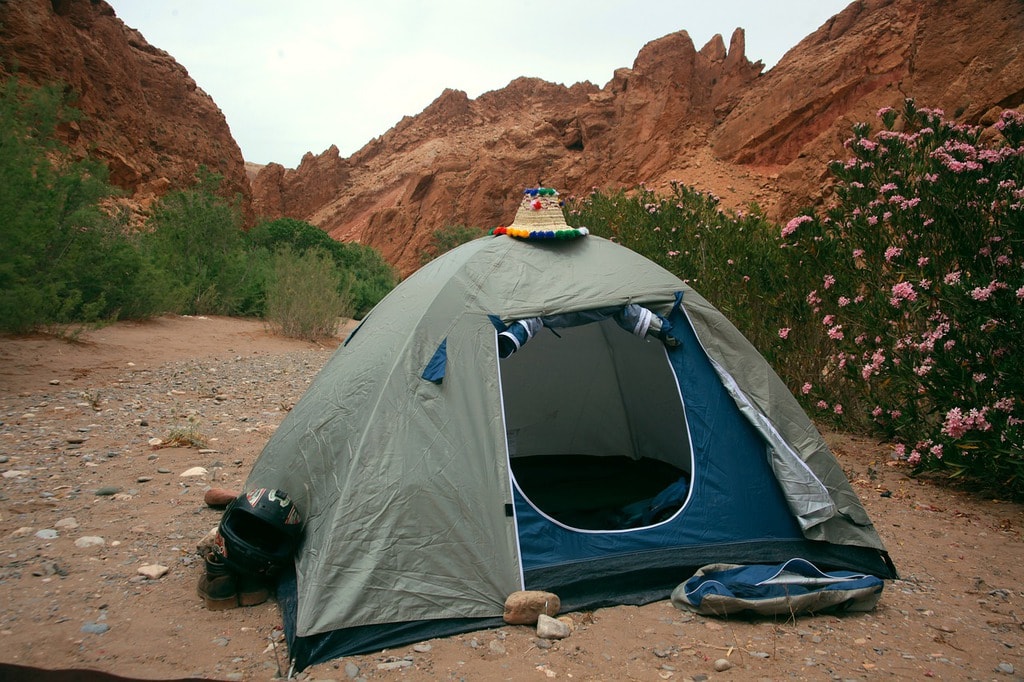
Quick Navigation
ToggleWhat is the Best Backpacking Tent Under 200?
We have compiled for you the top 5 Best Backpacking Tent Under 200 in 2024. In this article we go through the products that we have used ourselves, checked what other users thought about them and we ranked them accordingly.
With years of experience with backpacking tent for less than $200 and having used several backpacking tents under 200 dollars you can trust our review.
Moreover, you can scroll to the end of this review to see our mini buying guide as well as the answers to some of the frequently asked questions about backpacking tents under 200 dollars.
1. Moon Lence Camping Tent
| Specs |
|---|
| Price: 💲 (fewer 💲 = cheaper) Weight: 5.95 pounds (2.7 kg) Size: 83.8 x 59.8NaN inches (212.9 x 151.9NaN cm) Size: 2 Persons Material: 100% Polyester Waterproof: Yes |

In our quest to find the best value-for-money tents, the Moon Lence camping tent, priced under $200, stood out with its impressive array of features. This 2-person, double-layered tent, woven from 100% polyester, didn’t just catch our eye; it earned our trust. We admired its robust 190T PU material, boasting a commendable 1000mm water-resistance and UV-resistance. Setting it up was a breeze, thanks to its 2 shock cord connecting poles, allowing for a rapid 15-minute assembly. The tent’s lightweight iron pegs and guy lines provided the stability we crave, holding firm even in gusty conditions. We also benefited from the enhanced ventilation, owing to its dual windows, ground vents, and expansive mesh section. The detachable rainfly was a lifesaver for moisture control. Among the features we found especially handy were the internal mesh pockets and a ceiling hook – perfect for a lantern-lit evening under the stars. After thorough testing, we can confidently say: For backpackers seeking a compact yet feature-laden tent, Moon Lence is a top pick in our books.
Pros
- Perfect for two people,
- Can be stored easily,
- Strong legs with wind-resistant fabric,
- Waterproof yet offers great ventilation
Cons
- No tent footprint included,
- Zipper can become stuck
2. Browning Big Horn Tent
| Specs |
|---|
| Price: 💲💲💲💲 (fewer 💲 = cheaper) Weight: 21 pounds (9.53 kg) Size: 120 x 96 x 84 inches (304.8 x 243.8 x 213.4 cm) Size: 5 Persons Material: 75D 185T Polyester Fly, 150D Polyester Oxford Floor Waterproof: No |
This is hands down the best free-standing tent with generous space for a family camping trip. It features fiberglass poles with steel uprights that provide matchless strength and stability to survive rough conditions.
This tent can cover your entire family with its generous interior space and 84-inch center height. The tent also provides interior mesh pockets to give your family places for their personal items. Straight sidewalls further add convenience by supplying extra space to store your camping stuff.
When we talk about waterproof abilities, the Browning tent deserves appreciation. It features a 75D 185T polyester rainfly combined with 150D polyester floor with 2000m coating to keep you safe from wet weather.
Stay comfortable with multiple windows, one door, and a mesh roof that allows excellent airflow and reduced condensation. One the downside, it only has one door, which may be an inconvenience for the person at the furthest end of the tent. Here’s something that you need to know. Since it is a large size, it might be an overwhelming task to pitch it for a solo camper. It is also quite heavy at 21 pounds for a backpacking tent. However, it is our premium choice due to it’s high quality construction and size, and it comes with a 60-day manufacturer’s warranty.
Pros
- Super spacious,
- It offers cross ventilation,
- The tent includes straight sidewalls for more room,
- Quick assembly and set up
Cons
- Zippers gets stuck after a few uses,
- Design flaws lead to frequent leaks
3. Wakeman Dome Backpacking Tent
For those of us keeping an eye on the budget, the Wakeman two-person tent is a revelation. Despite being the most affordable option on our list, it competes well with premium tents in terms of quality. Crafted from durable 190T polyester, it comes with a water-resistant rainfly that ensures you stay dry, even when the skies open up.
However, the tent’s ventilation could use some improvement; it features only one mesh window on its large D-style door. That said, the dome tent design does offer plenty of space, complete with interior pockets for stashing your personal items. Its fiberglass poles add a layer of wind-resistance, making it suitable for mild weather. With a base dimension of 6.25×4.80 feet and a center height of 3.50 feet, you won’t feel cramped inside. But be warned, if you’re camping in hotter climates, the limited ventilation may be a concern.
Pros
- Low price,
- Simple setup,
- Easy carry with included bag,
- Lightweight yet sturdy design
Cons
- Not the best choice for hot weather,
- Only one window
4. ALPS Mountaineering Lynx Tent
| Specs |
|---|
| Price: 💲💲 (fewer 💲 = cheaper) Weight: 4 pounds (1.81 kg) Size: 91.2 x 36 x 33.6 inches (231.6 x 91.4 x 85.3 cm) Size: 1 Persons Material: 75D 185T Polyester Fly Waterproof: No |
The ALPS Lynx tent has won the hearts of many, and the reason is in its features. So, let’s dive right into it.
What sets this product apart from others? For starters, it has an effortless free-standing setup, which makes it a great choice among camping enthusiasts. It also features an aluminum dual-pole design that assembles easily with clips to hold up the tent on the poles.
Stay worry-free on rainy days and nights with the water-resistant and UV-resistant 75D polyester rainfly and factory-sealed seams. The tent also features a 75D poly taffeta floor with a 2000m coating for waterproofing.
If you want added protection for your valuable items, then make sure to check out my best waterproof backpacks.
The tent also features a vestibule that offers external gear storage within your reach while the internal gear loft and mesh pocket offers more space for personal items. The tent also allows excellent ventilation with half mesh walls and a door.
Pros
- It has a high-quality and robust construction, Vestibule is spacious enough to keep your gear, Guy lines to secure your tent, Quick and easy to pitch,
- Provides decent wind insulation,
- It comes with an interior mesh pocket
Cons
- ALPS is heavyweight, considering its size,
- It has a fairly compact size,
- Leaks through in heavy rain
5. Naturehike Lightweight Backpacking Tent with Footprint
| Specs |
|---|
| Price: 💲💲💲 (fewer 💲 = cheaper) Weight: 5.07 pounds (2.3 kg) Size: 84.6 x 70.9 x 43.3 inches (214.9 x 180.1 x 110 cm) Size: 3 Persons Material: 210T Polyester Waterproof: Yes |
If you want the least weight while trekking and hiking, nothing beats Naturehike’s 3-person tent. It keeps you going easy with its ultra lightweight construction at just 3.7lbs.
To make your hiking easier than ever, go through the
You’ll be glad to know that the aluminum poles and stable, lightweight construction holds up well in mild to moderate conditions, and is an excellent option for your backpacking adventures.
You can buy the tent with confidence as the manufacturer provides a 30-day money-back guarantee and lifetime warranty on quality-related issues.
Pros
- Ultra lightweight tent,
- Easy to assemble,
- Good value for money,
- It comes with every essential thing you need,
- Excellent ventilation
Cons
- Poor quality zippers,
- It might not hold up during high winds
Verdict
To summarize, we have gone through dozens of backpacking tents under 200 dollars and decided that 5 are worth your consideration. Out of these, the absolute Best Backpacking Tent Under 200 is Moon Lence Camping Tent which we highly recommend as our overall best.
If money is not an issue, you can consider Browning Big Horn Tent as this is our Premium Pick.
Otherwise, there’s no shame in spending prudently, Wakeman Dome Backpacking Tent is the Budget Option.
Our other reviews you may find useful in your research:
- Best 2 Person Backpacking Tent Under 100
- Best Family Tents for Bad Weather
- Best Family Tent for Winter Camping
What You Should Know Before Buying backpacking tents under 200 dollars
Overview
You do not need to make an immediate decision when shopping for your tent. For starters, you will need to look out for the key features that will complete your needs when you set up camp. In this way, you’ll be able to make the best decision. The buying guide below discusses the important aspects you should consider when buying a tent. So, let us get straight into it.
Backpacking Tent Material
Choosing a suitable backpacking tent material plays a vital role in protecting you against harsh weather conditions.
Most tents feature a nylon fabric construction, which offers the best quality for mid-range tents in normal conditions. It does not hold up well in rough conditions. On the other hand, we have polyester, which is a heavier material than nylon, but it is also a low-quality material commonly found in low-end tents.
Look for a tent with enhanced features that improve the quality of the material. For example, nylon material coated with polyurethane will be stronger, lightweight, and relatively economical. You can also consider a tent material that features a silicone-nylon coating, which offers waterproofing capabilities and wear-resistance to adverse weather elements.
Weight
First, we have the packaged weight, which refers to the tent’s overall weight. It includes everything packaged with the tent when you buy it, such as the tent body, rainfly, guylines, poles, stuff sacks, and tent stakes.
Size
Dimensions and tent size play a vital role when it comes to choosing the tent. You will need to be certain that it has sufficient space to accommodate you and your stuff properly. A tent size of 86×52/40×40 is an ideal choice for a 2-person backpacking tent. Besides the floor dimensions, the peak height of the tent is another aspect to consider. The greater the height, the more room you will have to move freely. Many duo-campers prefer the tents with a peak height of 40-42 inches.
Internal Space
Thru-hikers mostly prefer the 1-person tent to save on money and weight. Long-distance hikers tend to go for a 2-person tent for proper resting with a generous internal space. Buying a tent based on the space per person may be a good idea.
You should consider a tent that has high-roof to allow additional space to move or place your things comfortably. Along with a high-roof, do not forget to consider the rectangular design of the tent. It provides more dry storage space for things like cooking incase of poor weather.
Ventilation & Heat Resistance
How much of the tent body is mesh? It is one of the factors you will consider when buying a multi-season tent. In hot temperatures, you will need several mesh windows to get a substantial flow of air. Alternatively, you can pitch your tent away from the direct sun to pull the rainfly cover and allow the tent to ventilate. Rainfly covers usually have a waterproof coating, which inhibits proper air circulation in warm weather and often causes condensation inside the tent. So, is there any solution? Yes, consider getting a tent with roof vents on the inner tent to minimize condensation problems.. With the rainfly covering the inner tent, the spacing in-between these two fabrics gives the tent ventilation while still having protection from the rain.
Durability
When we talk about durability, we look at the denier rating of the fabrics used, which is visible on the product description. The denier indicates the weight of the fabric’s yarn. In case you might be wondering, a lesser rating means a lighter, thinner and less durable material, and vice versa. It also means that the denier is a significant factor in the tent’s weight, and you will need to balance these two factors. Some premium tents feature a silicone coating added to the fabric to increase durability while maintaining the lightweight advantage.
Poor quality backpacking tents with a low denier rating are vulnerable to getting tears on the tent floor, which can compromise their usability. To protect the groundsheet of a lightweight tent, you can opt to use a
Water, Wind and Snow Resistant
Weather protection is the foremost reason why you cannot compromise on quality at any cost. Most good quality tents can withstand moderate conditions like a champ, but what about the unexpected wind storm? For this, you may need to invest in a tent with stronger poles and more exterior ties to anchor you, and it can also serve you for longer in the years to come.
You should also consider a reasonable tent that is sturdy enough to survive in nasty weather. Look out for the heavy poles, rain flys, covers, and sealed seams.
The rainfly is an added waterproof protection that is added as an exterior covering of the tent. They are useful for keeping you dry during heavy rain. Looking deeper, you will find that there are two types of rainflies. Roof-only rainflies can light up your whole tent with sunlight due to their design that only covers the roof, and they provide a fair protection from rain. Full-coverage rainflies that cover the entire tent to the ground are best for protecting against adverse weather situations.
Poles are another important consideration. They maximize the interior space for livability by keeping the tent walls almost vertical. Also, make sure to include pole clips that connect to the canopies and sleeves of the tent. The pole clips further strengthens the tent’s pitching and minimizes saggy areas.
Setup
When you arrive at your campsite, you’re going to want setup to be as simple as possible. This includes your shelter.
We’ve noticed that the best modern tents prioritize simple designs with fewer poles, allowing setup in no time. For those who are newer to the camping scene, a preliminary setup in your backyard can make things easier when the time comes on your trip.
Design
Moving on to tent design, the more complex the design, the more room you will have to live in. However, many renowned brands use a simple design with extra features such as vestibules, generous headroom space, air vents, and internal pockets for your gear.
It is advisable to go for a simple free-standing design that allows you to set up and take down your tent quickly. Semi-freestanding and non-freestanding tents may take up more time to pitch because they require to be staked out.
Additional Features
The tent porch or vestibule in your tent is a convenient option to ensure that your essential gear stays covered during the night, and it frees up space inside the tent. Modern tents feature multiple interior pockets to keep your important belongings.
As for the poles, many backpacking tents come with aluminum poles that are sturdy and fairly lightweight. But, there’s a small caveat with these poles, which is, you may get a generic variety instead of the original. You could consider hubbed pole designs which are pretty much in demand for their incredible rigidity.
Questions and Answers About backpacking tents under 200 dollars
How can I maintain my 2 person backpacking tent in a good condition so it lasts me for years?
There are a myriad of ways to keep your tent in tip-top condition. The following are some of them
Store your tent in a dry place and away from UV light,
Treat the poles carefully,
Use a footprint that is custom to your tent,
Use the zippers with both hands,
Seal the seams to prevent leakage
How to clean your Waterproof tent?
You can use a non-abrasive sponge to clean the tent. However, try not to overwork the waterproofed areas as you may damage the protective coating. Target the soiled areas by soaking it in a bathtub of warm, soapy water, and let it dry out for some time.
